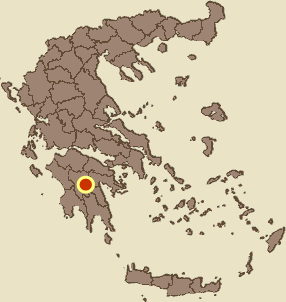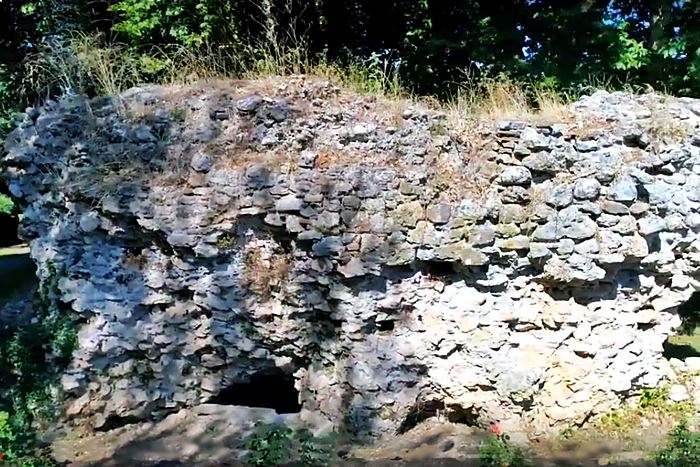Alea, Tripoli, Arcadia,Peloponnese
Castle of Nykli
| Location: |
| In the archaeological site of Tegea, NE of the village Alea, 8km SE of Tripoli in Peloponnese |
| Region > Prefecture: |  |
| Peloponnese Arcadia | |
| Municipality > Town: | |
| City of Tripoli • Alea | |
| Altitude: | |
|
Elevation ≈ 670 m (Relative Height≈0 m) |
| Time of Construction | Origin | |
| probably 10th cent. | BYZANTINE |
|
| Castle Type | Condition | |
| Castle Ruins |
In Ruins
|
Few remains from the medieval fortification of the Byzantine city Nykli (or Nicles for the Franks) in the archaeological site of Tegea in Peloponnese.
Nykli has been once an important Byzantine and later Frankish fortress-city, built at the location of ancient Tegea. At the end of 13th century, Nykli was destroyed by the Byzantines (to prevent recapturing by the Franks) and that was the end of its history.
Only small parts of the medieval wall are visible today inside and around the site with the ancient Greek ruins.
The most notable monument from the mediaval history of the place is the church of Theotokos also known as Palia Episkopi (old bishopric) built in the 11th century at the location of the ancient theater.
History
Nykli occupied the northeastern section of ancient Tegea, around the church of Palia Episkopi. In the classic period (5th-4th centuries BC) Tegea was one of the major cities of Arcadia. The ancient name was still in use in the early Byzantine period, because we know that a bishop of Tegea participated in the IV Ecumenical Council of Nicaea in 451, and also it is recorded in the Synekdemos of Hierocles (written in the 530s.)
The name of the city was forgotten after the early 8th century, probably as a result od the Slavic invasion. The city resurfaced in written records (hagiographies) of the 10th century as Nykli or Eniclion or Amyclion, and later as Nicles (in French). The etymology of the new name is not certain. Perhaps it is related to the ancient Laconic city Amyklai (located to some distance to the south of Nykli) .
Nykli developed to become one of the important fortress-states of the Byzantine Peloponnese. When the invading Franks came in 1205, Nykli was one of the 12 major castles that were targeted in order to secure their prevailing in the Peloponnese. However Nykli was captured later, in 1209. It became a seat of a Frankish barony with 6 fiefs. The first baron was Guillaume de Morlay.
Nykli's location made it an excellent assembly point for armies, as well as for parliaments like the famous “Ladies' Parliament” in 1262. It that parliament the wives of the lords who were war prisoners after the battle of Palagonia (1259) approved the surrendering of three castles (Mystras, Monemvasia and Maini) to the Byzantines as ransom for the prisoners.
In 1296, the Byzantine general Andronikos-Asan Palaiologos (grandson of emperor Michael VIII) captured Nykli in a surprise attack. He estimated that he could not hold it and he demolished the walls and razed the city in order not to be used by the Franks again. The population was moved to two new castles he built: Mouchli and Tsipiana.
That was the end of the castle and the medieval city of Nykli.
| First entry in Kastrologos: | February 2020 |
Sources
- Chornicle of the Morea — 1933, 2027, 3332, 4427
- Website ecastles - Νύκλι, κάστρο
- Ιωάννης Θ. Σφηκόπουλος, Τα µεσαιωνικά κάστρα του Μορηά , Αθήνα,1968, σελ. 205-207
- Website arcadiaportal.gr - https://www.arcadiaportal.gr/news/tegeatiko-nukli
|
|
| Access |
|---|
| Entrance: |
| Partly free access. Part of the medieval walls are within the guarded and fenced archaeological site. |








